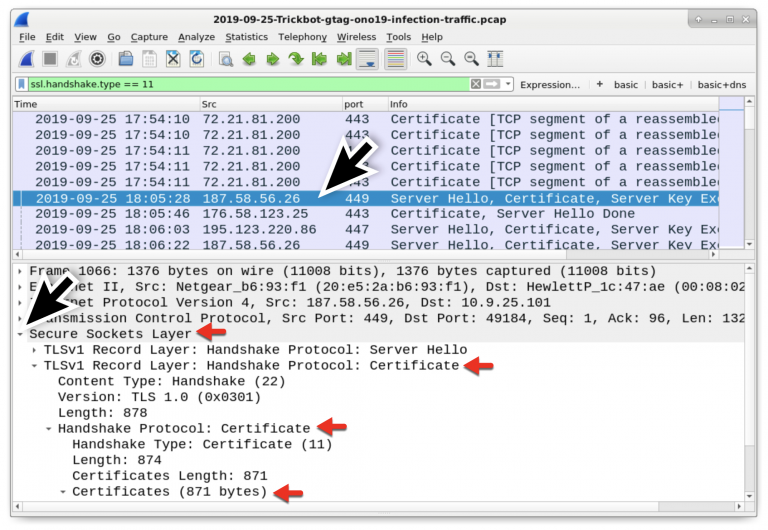
When using dumpcap -d, you still need to specify -f in -f
The value 22 (0x16 in hexadecimal) has been defined as being “Handshake” content.Īs a consequence, tcp & 0xf0) > 2)] = 0x16 captures every packet having the first byte after the TCP header set to 0x16. print generated BPF code for capture filter.

The first byte of a TLS packet define the content type. The offset, once multiplied by 4 gives the byte count of the TCP header, meaning ((tcp & 0xf0) > 2) provides the size of the TCP header. Tcp means capturing the 13th byte of the tcp packet, corresponding to first half being the offset, second half being reserved. It shows you the port number at bings end (443) and the port number at. Tcp & 0xf0) > 2)] = 0x16: a bit more tricky, let’s detail this below Wireshark Filter Port With Code Examples Hello everyone, in this post we will. Tcp port 443: I suppose this is the port your server is listening on, change it if you need Display filters let you compare the fields within a protocol against a. If a packet meets the requirements expressed in your filter, then it is displayed in the list of packets. You might have better luck using "tcp anycodings_port port 443" or "tcp port 443 or tcp port anycodings_port 80" to make sure you capture both HTTP anycodings_port and HTTPS.Tcpdump -ni eth0 “tcp port 443 and (tcp & 0xf0) > 2)] = 0x16)”Įth0: is my network interface, change it if you need Wireshark and TShark share a powerful filter engine that helps remove the noise from a packet trace and lets you see only the packets that interest you. Most web traffic anycodings_port these days is encrypted using HTTPS, and anycodings_port the IANA-assigned port for HTTPS is 443. However, the modern web doesn't really anycodings_port use port 80 any more. (Specifically, it calls anycodings_port getaddrinfo, which usually looks up the anycodings_port port in /etc/services on macOS and anycodings_port Linux, and anycodings_port C:\system32\drivers\etc\services on anycodings_port Windows.) If I open /etc/services on my anycodings_port system here, "http" corresponds to port anycodings_port 80.

It does so by anycodings_port looking up the port name in anycodings_port /etc/services. When you use a port name in a capture anycodings_port filter expression, libpcap (the packet anycodings_port capture library that Wireshark uses) anycodings_port needs to convert the name into a number anycodings_port that it can use to match against bytes anycodings_port the captured packet.


 0 kommentar(er)
0 kommentar(er)
